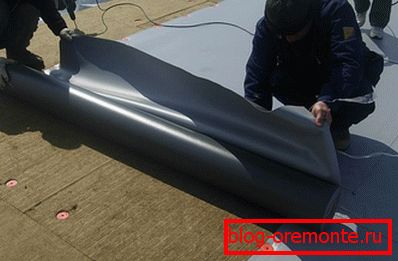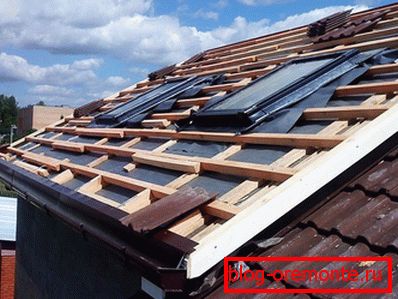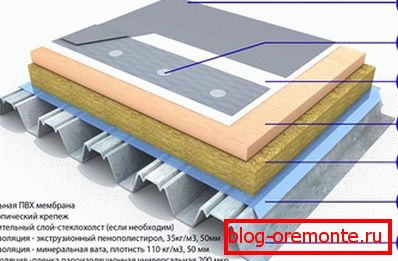How to make a waterproofing roof
Protecting the future of the roof from moisture - the most important stage in its construction. Making the roof not only aesthetically attractive but also of high quality is not an easy task.
First of all, the technology of waterproofing works will depend on whether you are going to work with a flat or sloping roof, because they differ in both the type of raw materials and the methods of their installation. One of the undoubted advantages is the fact that all the work can be done by hand.
Types of materials
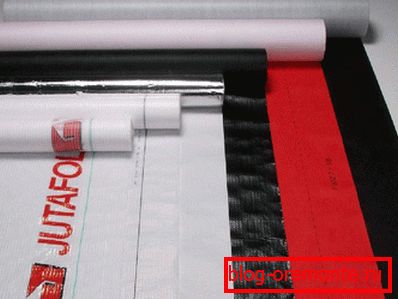
Materials can be divided into types according to the composition and method of application:
- Moisture perforated membrane film;
- PVC solutions and membranes based on them;
- Moisture-absorbing rubber sealants;
- Lubricant moisture and vapor barrier based on polyacrylic silicate resins, polyurethane coatings, multicomponent composite materials;
- Pollinators based on urea, acrylic acid derivatives, low melting rubber;
- High molecular weight membrane.
Polyvinyl chloride films are an advanced solution for roof waterproofing. The essence of the use of these films is reduced to laying a multi-layer cake on the roof surface and the subsequent evaporation of moisture from the composition of the polymeric material with its solidification and complete sealing. Layer size varies from 55-65 m in length and up to 15-20 m in width. In the case of the correct application of a protective coating, hydro-barrier cloth will serve you from 20 to 60 years with proper operation. The resulting canvas is surprisingly heat-resistant and can retain basic functions in wide temperatures (from -55 to + 125 degrees Celsius).
What material to choose

In the insulation of the roof are very popular films based on polyvinyl chloride and polystyrene foam. In rare cases, you can do without additional waterproofing. For example, in a hot climate where roof insulation is not required, a polystyrene solution would be a good sealant, but provided all the joints are securely fastened.
If necessary, insulate the flat roof and protect it from moisture; any type of membrane membranes should be used in conjunction with insulation. The simplest solution for insulation from moisture and heat loss of a flat roof will be the treatment of the roof with self-leveling composite materials in the form of coatings. Rubber and fusible rubber are also excellent materials for such work.

If you prefer a simpler method of waterproofing roll materials, and you will assemble them, then it is best to choose a ruberoid coating and rubemastik. Often attic space is used for various needs, including housing. In this case, you will need to use a high diffusion membrane. The downside is only the high price of the solution. In the case of irregularly shaped roofs and configurations, just such film coatings are the most reasonable choice.
The membrane film is applied on the rafters of the pitched roof or on the edges of the lintels. For fastening materials that are small in size, in the particular case, ordinary brackets can be used, additional crates are laid using cross rails and bars. If the attic needs waterproofing and insulation - this method would be the best option, both in terms of quality and in terms of the price of construction.
Note! When mounting the membrane on a folded roof, slate, concrete, a sensible solution is to use a moisture absorbing film. During the application of such films should be taken into account all possible gaps and holes. For this, the preliminary lathing of the roof is made.
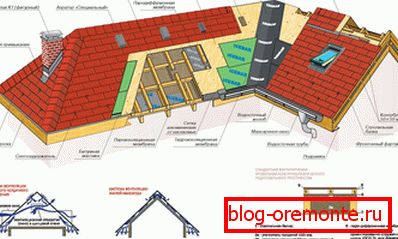
During the waterproofing work you need to take into account the many pitfalls and nuances. The main ones are:
- type of roof (simple, flat, odnoskatnaya, gable, mixed)
- purpose of use
- type of protective materials (metal tile, folding, roofing felt, shale, reinforced concrete, slate, etc.),
- way of warming.
Professionals are well aware of all the subtleties in the construction of the roof, in order to make insulation of the roof, they know the ways to create the most effective “roofing pie”. However, you can study some aspects of this work yourself and, as a result, do without the services of experienced professionals, while saving a considerable amount of money.
Styling methods
Most waterproofing films are used on a vast surface, on small roofs it is advisable to use a polymer coating.
Roof waterproofing is reduced to laying mastic on a flat surface (the slope should be minimal at the same time). The mastic itself can be applied in two ways: using a standard roller and a paint brush. It is advisable to apply a double layer.
By type of application, hot mastics can be distinguished:
- preheated to a temperature of +140 - 150 degrees,
- cold with a temperature not higher than +75 degrees in case waterproofing works are carried out in the cold season, when the air temperature does not exceed +3 - 5 degrees Celsius.

As soon as the polymeric mass of the mastic hardens, a dense seamless rubber coating should be applied. Advantages of rubber-like types of insulation can be considered durability, operation in a wide range of temperatures and resistance to aggressive media.
Waterproofing coating usually serves about 25 years.
Video: rules of laying waterproofing
A photo
